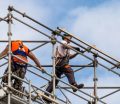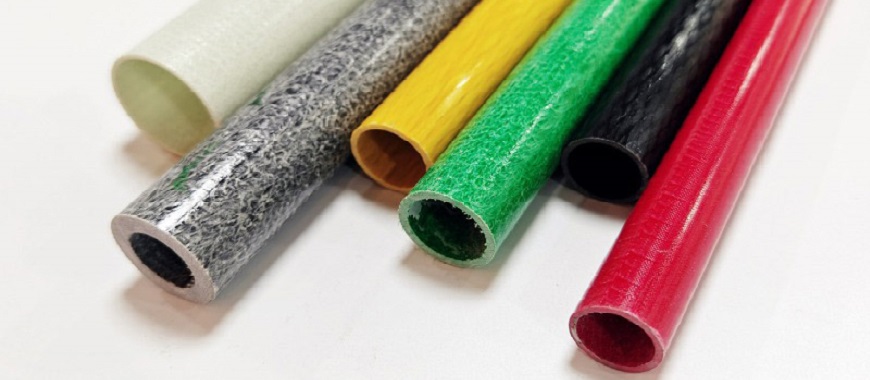
Thin wall fiberglass tubes represent a cutting-edge solution for industries seeking materials that merge superior performance with minimal weight. Engineered for applications demanding high strength-to-weight ratio, durability, and corrosion resistance, these tubes excel in telecommunications, aerospace, medical devices, and beyond. Lightweight, cost-effective thin wall fiberglass tube solutions balancing high strength and radio transparency in multiple shapes. Their non‑conductive nature and customizable profiles make them ideal for situations where electrical insulation and precise dimensions are critical. With a broad spectrum of diameters and geometries available, thin wall fiberglass tubing streamlines design and installation processes, delivering reliable, long‑lasting performance across diverse environments.
The Basics of Thin Wall Fiberglass Tube
Thin wall fiberglass tubes are revolutionizing the construction and maintenance industries. These tubes are made from fiber‑reinforced plastic, a composite material consisting of a polymer matrix reinforced with fibers. The resultant product is a robust, lightweight tube ideal for various applications.
- Material Composition: Glass fibers embedded in a thermosetting resin (e.g., polyester, vinyl ester, or epoxy) deliver structural strength, rigidity, and chemical resistance
- Lightweight & High Strength: Low density for easy handling and transport, yet a superior strength‑to‑weight ratio that meets demanding load requirements
- Corrosion & Weather Resistance: Non‑metallic construction won’t rust or corrode, resisting water, salts, acids/alkalis, and UV exposure
- Electrical & Thermal Insulation: Inherent electrical non‑conductivity and low thermal conductivity reduce electrical shock and heat‑related risks
- Easy Installation: Thin‑walled, flexible fiberglass tube can be cut, drilled, and fastened with standard tools, saving time and labor.
- Low Maintenance & Cost‑Effective: Long service life with minimal upkeep, resulting in lower total ownership costs compared to metal alternatives
Comparison with Traditional Materials
To provide a clearer comparison between thin wall fiberglass tubes and traditional materials like steel and aluminum, the following table is presented:
| Feature | Thin Wall Fiberglass Tube | Steel | Aluminum |
|---|---|---|---|
| Weight | Very Light | Heavy | Light |
| Strength-to-Weight Ratio | High | Moderate to High | High |
| Corrosion Resistance | Excellent | Poor | Good |
| Electrical Conductivity | Non-conductive | Conductive | Conductive |
| Installation Ease | Easy | Difficult | Moderate to Easy |
| Cost Over Time | Cost-effective | Less Cost-effective | Moderate |
| Thermal Conductivity | Low | High | Moderate |
| Safety in Electrical Hazards | Safe | Hazardous | Hazardous |
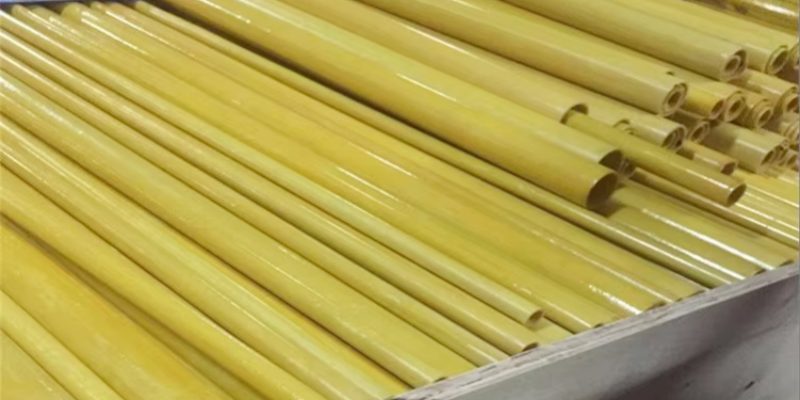
Thick Wall Fiberglass Tube: A Comprehensive Applications
Advantages of Thin Wall Fiberglass Tube
Thin wall fiberglass tube technology enhances composite structures with lightweight, robust performance. By combining glass fibers with resin, these tubes achieve remarkable strength‑to‑weight ratios and resist corrosion, electricity, and extreme temperatures. Their low density simplifies transport and handling, while the composite makeup delivers durability and chemical resistance, making them ideal for applications requiring dependable, low‑maintenance structural elements.
Lightweight & High Strength‑to‑Weight Ratio
Thin wall fiberglass tube’s low density reduces handling effort and transport costs, while its composite structure provides exceptional tensile and flexural strength. These tubes support heavy loads comparable to steel yet weigh a fraction, improving operational efficiency on‑site. Their superior strength‑to‑weight ratio enables safer material handling and streamlined assembly workflows, making them an optimal choice for projects where ease of movement and structural performance are critical.
Exceptional Durability & Low Maintenance
Built from corrosion‑resistant glass fibers and resilient resin, thin wall fiberglass tubes resist rust, moisture, chemicals, and UV degradation without protective coatings. Their non‑metallic nature prevents electrochemical corrosion, ensuring long‑term performance in harsh environments. With minimal wear and no need for regular painting or anti‑corrosion treatments, these tubes significantly reduce maintenance costs and downtime while preserving structural integrity throughout extended service lifespans.
Safety & Insulation Properties
Thin wall fiberglass tubes provide inherent electrical insulation, eliminating conductivity and reducing shock hazards around live circuits. Their low thermal conductivity also shields against rapid heat transfer, protecting personnel and temperature‑sensitive components. Combined with non‑slip textured surfaces and fire‑resistant resin formulations, these tubes enhance on‑site safety by mitigating slip, fire, electrical, and thermal risks across a wide range of industrial and construction environments.
Quick Assembly & Adaptability
With thin wall fiberglass tube components, assemblies require minimal tools and labor. Their flexibility allows precise alignment and easy modifications, while standard saws, drills, and fastening hardware suffice for cutting and joining. This modular adaptability supports unique project configurations and rapid reconfiguration, accelerating setup and teardown. The tubes’ compatibility with existing ergonomic connectors further streamlines procedures, yielding efficient workflows and reduced project timelines.
Sustainability
Thin wall fiberglass tubes are manufactured from recyclable materials and deliver long service lives, reducing the frequency of replacements and waste generation. Their corrosion resistance negates the need for chemical treatments, while low maintenance lowers environmental impact from operations. By supporting greener practices and aligning with sustainable construction standards, these composite tubes help minimize carbon footprints and contribute to eco‑conscious project delivery.
Thin Wall Fiberglass Tube for Various Applications
Thin wall fiberglass tubes combine glass fibers bound in thermosetting resin to deliver exceptional strength, lightweight performance, and resistance to corrosion, electrical and thermal stresses. Their durability and low maintenance across diverse environments make them indispensable for applications demanding reliable, high‑performance tubular components.
Aerospace & Automotive
Thin wall fiberglass tubes provide lightweight structural support in aerospace and automotive settings by reducing overall mass while retaining mechanical integrity. They serve as primary components in unmanned aerial vehicle frames, aircraft interior reinforcements, and chassis elements, improving fuel efficiency and load distribution. Additionally, their heat-resistant properties suit exhaust liners and thermal shielding applications in high-performance engines in demanding environments.
Electrical & Electronics
Non-conductive fiberglass tubes excel at protecting electrical systems by providing reliable insulation and mechanical protection for cables and components. They function as protective conduits for power distribution, control wiring, and high-voltage assemblies, preventing short circuits and dielectric breakdown. Their thermal stability ensures consistent performance under elevated temperatures, making them ideal for use in transformers, switchgear panels, and critical electrical infrastructure.
Marine & Outdoor
Due to their corrosion-resistant composite structure, thin wall fiberglass tubes perform exceptionally in marine and outdoor installations. They’re used for boat masts, railings, and structural supports where saltwater exposure and UV radiation could degrade metal alternatives. Their lightweight nature simplifies handling and minimizes ballast requirements, while superior durability reduces maintenance cycles in harsh environments, ensuring long-term reliability under environmental stressors.
Sports & Recreation
Fiberglass tubes offer flexibility, resilience for sports, and recreational gear, including fishing rods, tent poles, ski poles, and barrier structures. Their high tensile strength withstands dynamic loads and impacts, while low weight enhances portability for outdoor activities. Corrosion resistance ensures equipment longevity in moisture-prone settings. Manufacturers can tailor tube dimensions and stiffness to meet performance requirements across diverse athletic equipment.
Industrial & Construction
Thin wall fiberglass tubes provide corrosion-resistant linings and structural components in industrial construction environments. They protect chemical pipelines, serve as durable rollers in manufacturing machinery, and act as thermal barriers in building insulation. Their resistance to moisture, acids, and abrasive wear reduces downtime and maintenance costs. Lightweight, modular, these tubes simplify installation, adapting to diverse project specifications with minimal customization.
Renewable Energy
Thin wall fiberglass tubes form structural cores for wind turbine blades and frames for solar panel arrays, offering lightweight strength and high fatigue resistance under cyclic loading. Their corrosion resistance ensures performance in diverse climates, while low thermal conductivity maintains dimensional accuracy. Producers choose these tubes to minimize maintenance and increase energy output efficiency in installations facing wind, sun, weather extremes.
Medical
Non-magnetic thin wall fiberglass tubes serve essential roles in medical device frameworks and diagnostic equipment. They provide structural integrity without interfering with MRI or X-ray imaging processes. Chemical resistance allows sterilization using standard hospital protocols. The tubes’ biocompatible resin formulations and smooth surfaces facilitate safe contact with medical components, ensuring hygiene and reliability in surgical assistants, imaging tables, portable systems.
Agricultural & Environmental
In agricultural and environmental projects, thin wall fiberglass tubes support greenhouse frames, irrigation systems, and protective enclosures. Their resistance to moisture, chemicals, and UV exposure prevents degradation in wet and sunny conditions. Lightweight design accelerates assembly and reduces structural loads. Customizable lengths and diameters enable precise fluid distribution and plant support, fostering efficient and sustainable farming and ecological management practices.
Sizing Options for Every Project
Selecting the right size for thin wall fiberglass tubes is essential for ensuring performance and adaptability to specific project needs. The availability of various sizes enables precise customization based on the structural demands, weight-bearing capacity, and environmental conditions of different applications. Below are the common dimensions and guidance on choosing the appropriate size for your specific use case.
Common Thin Wall Fiberglass Tube Sizes
- Diameter Variations: Thin wall fiberglass tubes typically come in a variety of diameters, ranging from 1 inch to over 2 inches. This range allows for the selection of appropriate tube thickness and strength, depending on the project’s load-bearing needs.
- Length Options: Available in standard lengths from 6 feet to 10 feet, these tubes can be used as individual segments or combined to form longer configurations, depending on the application requirements.
- Custom Lengths: Custom lengths can be cut to size, making it possible to tailor the tubes to specific project measurements without additional modifications.
- Wall Thickness: The wall thickness of thin wall fiberglass tubes can vary to offer a balance between lightness and load-bearing capacity, with thicker walls providing more strength and thinner walls reducing weight.
- Adjustable Sizes: Telescoping components featuring thin wall fiberglass tubes allow for height modifications, accommodating uneven ground or varying working heights, enhancing flexibility in usage.
- Tube Shape & Modularity: While round tubes are common, square and rectangular options provide different strengths and configurations, and modular systems can be used to build versatile and scalable structures.
Tips on How to Select the Right Size for Specific Project Needs
- Plan for Future Use: Choose a versatile size that can be adapted for multiple applications or future projects, offering long-term flexibility.
- Assess Load Requirements: Evaluate the weight of the materials or equipment to be supported. Ensure the chosen thin wall fiberglass tube diameter and wall thickness correspond to these load demands for structural integrity.
- Evaluate Working Height: For projects requiring vertical support, the height of the area will impact the necessary tube strength and length. Adjustable or telescoping tubes may offer flexibility for varying heights.
- Consider Work Area Dimensions: In large-scale projects, longer tubes may reduce the need for multiple supports, minimizing joints and enhancing stability across the work area.
- Factor in Weather Conditions: Harsh weather, including high winds or rain, may necessitate thicker or larger diameter tubes for added stability and resistance against environmental stress.
- Check for Modularity: For ease of assembly and adaptability, ensure the components of modular systems are compatible and can securely lock together. This provides flexibility for various configurations.
- Understand the Terrain: Uneven or irregular ground surfaces may require adjustable tube sizes to compensate for ground variations while maintaining safety and stability.
- Review Frequency of Reconfiguration: For projects requiring frequent adjustments or reconfigurations, lightweight and easy-to-handle tube sizes will save time and labor while ensuring structural integrity.
- Assess Accessibility Needs: If access is limited, smaller and more manageable tube sections can be easier to handle, move, and assemble in restricted spaces.
- Prioritize Safety: Always select sizes that meet or exceed safety standards to ensure the tube can withstand the anticipated load and environmental conditions.
- Consult with Professionals: When uncertain, seek advice from engineers or experts who can provide guidance on the most appropriate sizing for your specific needs.
- Consider Storage and Transport: Larger tubes may need specialized storage or transportation solutions, so consider these factors when selecting the appropriate size.
- Explore Custom Solutions: If standard sizes don’t meet your project needs, inquire about custom-cut thin wall fiberglass tubes to achieve the ideal dimensions.
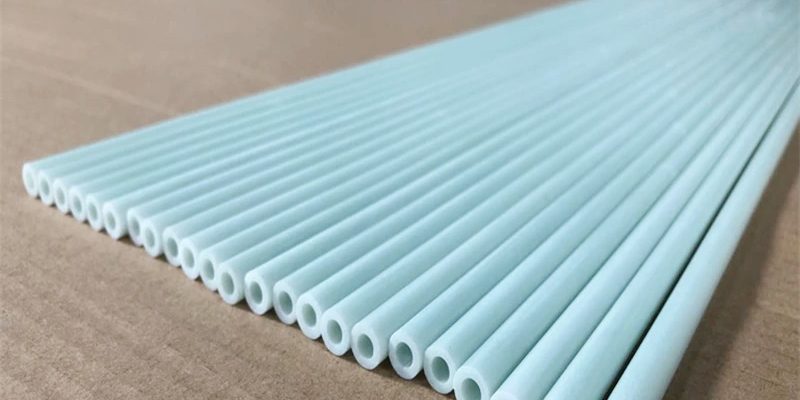
How to Choose the Right Tapered Fiberglass Tube Size
Manufacturing Process of Thin Wall Fiberglass Tube
The production of thin wall fiberglass tubes involves precision techniques to achieve lightweight, durable, and high-performance components. Common methods include pultrusion, filament winding, resin transfer molding (RTM), and hand lay-up. Each technique provides unique advantages for different applications based on strength, complexity, and production volume.
Pultrusion Process
The pultrusion method is widely used for producing continuous lengths of fiberglass tubes with consistent cross-sections. This process ensures high precision and uniformity in the tubes.
- Material Preparation: Continuous strands of fiberglass rovings and mats are used as reinforcing materials. A thermosetting resin (such as polyester, epoxy, or vinyl ester) is prepared as the matrix.
- Impregnation: Fiberglass is drawn through a resin bath to ensure thorough saturation with the resin.
- Shaping: The saturated fibers pass through a preforming guide and into a heated die where the tube is shaped, and the resin is set.
- Curing: Inside the die, heat and pressure cure the resin, forming a rigid tube.
- Cutting and Finishing: The tube is continuously pulled through the die and cut to the desired length, completing the manufacturing process.
Filament Winding Process
This method is used for creating fiberglass tubes with high strength and precise fiber orientation, making it ideal for high-stress applications.
- Mandrel Preparation: A cylindrical mandrel is prepared as the base for winding the fiberglass fibers.
- Fiber Winding: Continuous glass fibers are coated with resin and wound around the rotating mandrel in precise patterns, such as helical or circumferential arrangements.
- Curing: The wound fibers are cured either at room temperature or in an oven to harden the resin and secure the structure.
- Mandrel Removal: After curing, the mandrel is removed, leaving behind a hollow fiberglass tube with the desired strength and shape.
Resin Transfer Molding (RTM)
RTM is a closed-mold process used for producing highly accurate and complex shapes, including thin wall tubes, which require precise control over the material distribution.
- Mold Setup: A mold is prepared with the desired shape for the tube. Fiberglass reinforcement is placed inside the mold.
- Resin Injection: Resin is injected under pressure into the mold, saturating the fiberglass material.
- Curing: The mold is heated to cure the resin, forming the solid tube structure.
- Demolding and Finishing: After curing, the tube is removed from the mold, trimmed, and polished as needed to complete the process.
Hand Lay-Up Process (For Prototyping or Low Volume Production)
This manual method is often used for custom or small-scale production of fiberglass tubes. It is suitable for applications requiring specific, low-volume designs.
- Mandrel or Mold Preparation: A mandrel or mold is prepared and coated with a release agent to facilitate easy removal of the tube.
- Layering Fiberglass and Resin: Fiberglass fabric or mats are layered over the mold, with resin applied to each layer to build up the tube’s structure.
- Curing: The tube is allowed to cure at room temperature or in a curing chamber, hardening the material.
- Demolding and Finishing: Once hardened, the mold is removed, and the tube is trimmed and polished to the desired specifications.
Key Factors in Manufacturing
- Material Selection: fiberglass type, resin type, and additives are chosen based on application requirements (e.g., strength, temperature resistance, or UV resistance). When selecting materials, it’s also important to consider the compatibility of fiberglass tube end fittings, ensuring they match the type of fiberglass used for a secure and leak-proof connection.
- Wall Thickness Control: Precise control during shaping and curing ensures uniform thin walls.
- Quality Assurance: Tubes are inspected for defects such as voids, uneven thickness, or weak spots.
Where to Find Thin Wall Fiberglass Tube
Finding the right thin wall fiberglass tube for your project can be easy with the right information and resources. Whether you’re considering online purchases or seeking reliable local sources, this guide will help you make an informed decision.
Guide to Sourcing Thin Wall Fiberglass Tubes
- Local Construction Material Suppliers: These suppliers often carry a variety of construction materials, including thin wall fiberglass tubes, due to their widespread use in various industries.
- Specialized Vendors: Shops focusing specifically on fiberglass and composite materials are more likely to offer a wider range of sizes, custom options, and tailored solutions for your needs.
- Trade Shows and Conventions: Attending industry events gives you access to the latest products and innovations in materials, including thin wall fiberglass tubes.
- Referrals from Industry Professionals: Construction professionals can often recommend reputable local suppliers and vendors who specialize in fiberglass tubes.
- Industrial Material Wholesalers: These outlets typically offer a broad selection of construction materials, including thin wall fiberglass tubes, often at competitive prices for bulk orders.
- Recycling or Reclamation Yards: For eco-conscious projects, sourcing recycled thin wall fiberglass tubes can be both cost-effective and sustainable, as these facilities may offer reused materials at a lower cost.
Online vs. In-Store Options: Pros and Cons
| Aspect | Online Purchasing | In-Store Purchasing |
|---|---|---|
| Selection | Broad, with access to multiple suppliers. | Limited to the inventory of local stores. |
| Convenience | Shop from anywhere, anytime. | Instant procurement without waiting for shipping. |
| Pricing | Potentially lower due to competition and lower overhead costs. | Prices can be higher, but there’s room for negotiation. |
| Expert Advice | Varied; dependent on the website's customer service. | Direct access to experts and personalized advice. |
| Shipping Costs | Additional costs apply, but some retailers offer free shipping. | No shipping costs, although transportation may be needed for large orders. |
| Return Policy | Policies vary; returns can be more challenging. | Easier to return or exchange products directly. |
| Product Inspection | Cannot inspect the product before purchase. | Allows for physical inspection before buying. |
The Costs of Thin Wall Fiberglass Tube
A variety of factors influence the cost of thin wall fiberglass tubes, from material specs and order size to market dynamics, logistics, and long‑term maintenance. Understanding these elements is key to accurate budgeting and maximizing value over the product’s lifecycle.
Material Quality & Tube Specifications
The quality of thin wall fiberglass tubes directly influences price. Premium-grade resin and high-strength glass fiber command higher rates due to enhanced durability and corrosion resistance. Larger diameters, longer lengths, and increased wall thickness raise costs proportionally. Custom features like UV stabilization, unique colors, and textured surfaces also carry surcharges, reflecting added production complexity and tooling adjustments necessary to meet specific project requirements.
Order Quantity & Supplier Factors
Bulk purchases of thin wall fiberglass tubes typically secure discounts, reducing unit prices significantly. Minimum order quantities and supplier economies of scale affect per-tube costs. Manufacturer reputation and production capacity also influence pricing, with established brands often charging premiums for quality assurance and warranties. Ordering small batches usually increases unit cost, while wholesalers and direct factory orders can offer favorable terms for larger volumes.
Market Trends & Economic Conditions
Raw material price fluctuations, especially for resin and glass fiber, directly impact thin wall fiberglass tube costs. Market demand, supply chain disruptions, and global economic factors like inflation and exchange rates can cause price volatility. Tariffs on imported materials and regional tax policies further adjust expenses. Staying informed on commodity markets and economic forecasts helps project budgets more accurately and anticipate future cost changes.
Transportation & Regional Costs
Shipping expenses for thin wall fiberglass tubes vary with distance, weight, and packaging requirements. Long-haul freight and oversized loads can notably increase delivery costs. Regional factors such as local taxes, tariffs, and material availability further affect pricing. Proximity to manufacturing facilities often reduces logistics fees. Factoring in crating, insurance, and handling charges ensures more comprehensive budgeting for tube procurement in diverse geographic locations.
Long-Term Value & Maintenance
Although initial investment in thin wall fiberglass tubes may seem higher than metal alternatives, their longevity and low maintenance yield cost savings over time. Resistance to corrosion, UV degradation, and chemical exposure reduces the need for repairs or replacements. Minimal upkeep—usually limited to periodic cleaning—eliminates painting or coating expenses. This durability translates into lower lifecycle costs and a more sustainable return on investment across multiple projects.
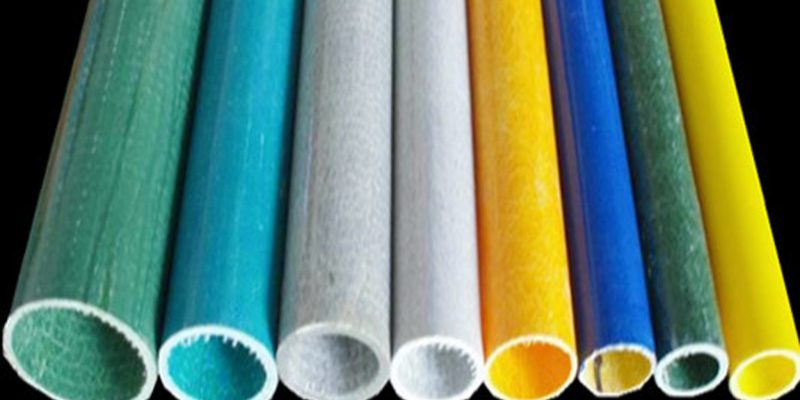
Spotlight on GangLong Fiberglass Thin Wall Fiberglass Tube Solutions
GangLong Fiberglass is a leading provider of high-quality thin wall fiberglass tube solutions, recognized for innovation in the industry. We specialize in producing lightweight, durable, and high-performance tubes that meet the diverse needs of various sectors.
GangLong Fiberglass: A Leading Provider of Thin Wall Fiberglass Tubes
- Specialized Production: We focus on producing premium thin wall fiberglass tubes that form the foundation of efficient, reliable applications across industries.
- Advanced Materials: Utilizing state-of-the-art materials and advanced technologies, our thin wall fiberglass tubes meet rigorous standards for strength and performance.
- Customized Solutions: GangLong Fiberglass offers tailored lengths and dimensions, ensuring our products fit seamlessly into any specific project requirements.
- Industry Compliance: Our thin wall fiberglass tubes adhere to the strictest safety and performance regulations, guaranteeing reliability in every use.
- Environmental Responsibility: Committed to reducing our ecological footprint, our products are crafted from recyclable materials, minimizing waste and supporting sustainability.
- Wide Reach: With a global market presence, we maintain efficient distribution networks to ensure timely delivery of our thin wall fiberglass tubes.
- Competitive Pricing: We offer high-quality products at competitive prices, ensuring excellent value for businesses in need of reliable fiberglass tube solutions.
- Customer Service: Our dedicated customer service team is ready to assist with orders and provide expert advice on the best thin wall fiberglass tube solutions for your needs.
Features and Benefits of Opting for GangLong Fiberglass Products
Lightweight & Streamlined Assembly
GangLong’s thin wall fiberglass tubes weigh significantly less than metal counterparts, simplifying transport and handling. Their reduced mass and intuitive connection interfaces accelerate on‑site assembly and disassembly, cutting labor time and logistical expenses while maintaining secure, reliable fit‑ups under demanding conditions.
Durability & Corrosion Resistance
Constructed with premium glass fibers embedded in robust resin, these tubes resist UV exposure, moisture, impact, and chemical attack. Their non‑metallic composition prevents rust and electrochemical corrosion, ensuring consistent performance in coastal, industrial, or outdoor environments without coatings or frequent replacements.
Electrical Insulation & Thermal Stability
As inherently non‑conductive components, the fiberglass properties of thin wall fiberglass tubes provide reliable electrical insulation, mitigating shock hazards around live circuits. Their low thermal conductivity, a key fiberglass property, stabilizes dimensions under temperature fluctuations, protecting equipment and personnel from heat‑related risks while maintaining structural integrity in extreme conditions.
Strength‑to‑Weight & Low Maintenance
With an exceptional strength‑to‑weight ratio, these tubes support heavy loads comparable to steel yet remain easy to maneuver. Minimal maintenance requirements—no painting or anti‑corrosion treatments—translate into lower lifecycle costs and higher availability across multiple projects, maximizing return on investment over time.
Top Benefits of Using Silicone Fiberglass Tube in Equipment
Successful Applications and Case Studies of Thin Wall Fiberglass Tube
Thin wall fiberglass tube has been instrumental in advancing projects across maritime maintenance, industrial plants, electrical infrastructure, heritage restoration, event staging, aerospace hangars, and metro construction. These real-world examples demonstrate its versatility, durability, and safety across demanding environments.
- Maritime Shipping Maintenance: A leading maritime company utilized thin wall fiberglass tubes for its shipping fleet upkeep. Their non‑corrosive nature ensured long‑term durability even in high‑salt environments.
- Industrial Chemical Plants: In facilities challenged by aggressive substances, thin wall fiberglass tubes provided a resilient, non‑reactive solution that maintained structural integrity where metal alternatives would degrade.
- Electrical Utility Work: A national grid operator selected thin wall fiberglass tubes for their non‑conductive properties, safeguarding workers during high‑voltage installation and repair tasks.
- Historical Monument Restoration: Restoration teams supporting ancient structures employed thin wall fiberglass tubes as unobtrusive supports, avoiding any chemical interaction with delicate materials.
- Large‑Scale Event Staging: Organizers of a major televised sporting event used thin wall fiberglass tubes to assemble and dismantle extensive stage frameworks quickly, benefitting from their light weight and portability.
- Commercial Aircraft Hangars: A leading aerospace firm incorporated thin wall fiberglass tubes in its hangar maintenance setups, leveraging the tubes’ strength and reduced weight to enhance safety and efficiency.
- Metro Station Construction: During the build‑out of a new urban transit station, contractors turned to thin wall fiberglass tubes for their straightforward assembly process and ability to withstand demanding city‑site conditions.
FAQs about Thin Wall Fiberglass Tube
Thin wall tubes refer to tubing with a wall thickness that is significantly less relative to its diameter. In the context of fiberglass tubes, a thin wall is usually defined by the ratio of the tube’s external diameter to its wall thickness. Although specific dimensions can vary depending on the application and manufacturer, generally, a tube is considered to have a “thin wall” if the wall thickness is less than 1/10th of the tube’s diameter. This characteristic makes thin wall tubes lighter and somewhat more flexible, while still maintaining a degree of strength and rigidity. Thin wall tubing finds diverse applications across industries because it provides an ideal balance between weight and performance, especially in scenarios where reducing overall weight is crucial without substantially sacrificing structural integrity.
Fiberglass tubes are highly versatile and used in a range of applications across various industries. Their high strength-to-weight ratio, resistance to corrosion, and non-conductive properties make them particularly valuable. For instance, in the aerospace and automotive sectors, they serve as structural components, providing strength without adding significant weight. In electrical and telecommunications industries, fiberglass tubes are prized for their excellent insulating properties, often used as protective housing for wires and cables. In construction, they can be seen as scaffolding poles or as forms for concrete structures because of their durability and resistance to environmental factors. Recreational industries utilize fiberglass tubing in the manufacturing of tent poles, bicycle frames, and even in specialized applications like kite and drone framing. Through the combination of their lightweight, strength, and resistance to corrosion, fiberglass tubes fulfill crucial roles in multiple domains.
Cutting a fiberglass tube requires preparation and the correct tools to ensure a clean, safe cut. Firstly, it’s essential to wear protective gear, including a dust mask, safety goggles, and gloves, to protect against fiberglass particles. Use a sharp, fine-toothed saw blade, such as a hacksaw or a jigsaw with a fiberglass cutting blade, to achieve a smooth edge. Mark your cutting line clearly on the tube with a marker. To minimize splintering and ensure a straight cut, apply a strip of painter’s tape along the marked line. Secure the tube firmly in a vise or with clamps to prevent it from moving. When cutting, use steady, controlled movements to gradually saw through the tube. Take care not to apply excessive force, as this can cause the fiberglass to splinter. After cutting, smooth the cut edges with fine-grit sandpaper to remove any sharp or rough spots, ensuring to wear your protective gear throughout the entire process.
Fiberglass tubing is renowned for its remarkable strength, often comparable to, or exceeding, that of some metals when considering its weight-to-strength ratio. It is comprised of fiberglass strands embedded in a resin matrix, creating a composite material that is both lightweight and extremely durable. Fiberglass tubes can withstand significant loads, impacts, and bending forces, making them ideal for applications requiring strength without the weight burden of metal. Furthermore, they exhibit excellent resistance to corrosion, temperature fluctuations, and chemical exposure, maintaining their integrity over a wide range of harsh conditions. The specific strength of fiberglass tubing can vary depending on the manufacturing process, the orientation of the fiberglass strands, and the types of resin used, allowing for customization to meet the demands of various applications. Overall, the superior strength characteristics of fiberglass tubing, coupled with its other advantageous properties, make it a preferred choice for many engineering and industrial applications.

As the editor of GangLong Fiberglass, I have years of experience and in-depth research, focusing on cable tray products, fiberglass solutions, and grille systems. I incorporate years of industry insights and practical experience into every content, committed to promoting the progress of the industry. At GangLong Fiberglass, my commitment is reflected in every product, from innovative cable trays to durable fiberglass solutions and sturdy grille systems. As an authoritative voice in the industry, my goal is to provide valuable information to professionals and businesses and promote forward-looking solutions.

